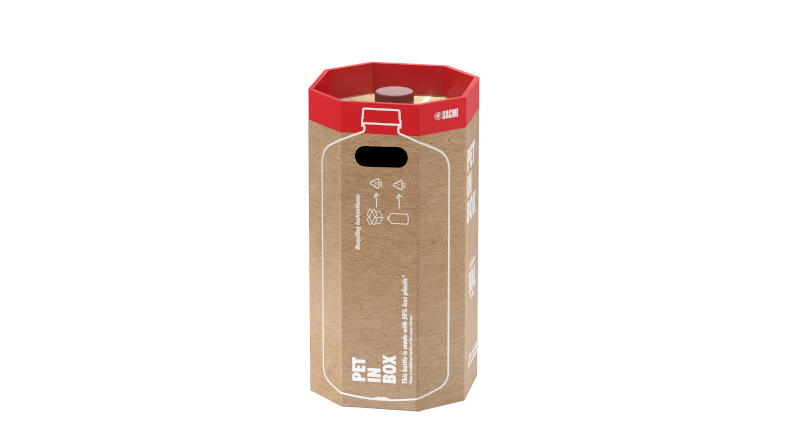Bottle design for sustainability
An ‘on-field’ approach by Sacmi
The availability of advanced instrumentation and pilot lines means that every solution developed by the laboratory, together with customers, can be tested in the field to validate the performance of the cap, preform and blow moulded container. Functional and elegant design, lightweight and sustainable. With an increasing proportion – which is growing in Europe because of regulations – of recycled resin. This is modern beverage packaging.
Technological challenge
The lightweighting of containers and the increasing use of recycled resins (especially rPET) pose significant technological challenges. The first is to create a technical-structural design that brings the characteristics of the lightweight bottle as close as possible to the required functional specifications and which provides a traditional consumption experience for the customer. The second involves the process, in terms of the increasing amount of recyclate in the mixtures, which compared to a virgin resin, is highly variable in terms of quality, viscosity, etc.
For more than 10 years, Sacmi has been investing in developing blow-moulding technology. Robust, reliable, high-performance machines ready to take on the challenge of new lightweight containers and/or those made with up to 100% recycled material. Sacmi has tested various solutions in the current supply chain, first on still water containers and then on CSD containers, which is equally challenging due to the high quality and sealing performance required for carbonated beverage containers.
The proposal
Resin testing and analysis, advanced technologies for both preform production (IPS, injection preform system) and blow moulding (SBF rotary blow moulding machines also available in combination with the filling line), allow Sacmi to work on the design, optimise it according to the customer’s needs and to develop ad hoc solutions based on commercial requirements. This ability delivers advantages in terms of time-to-market, with the possibility of fast prototype development (also using new 3D moulding techniques) and testing the prototypes of the blow moulded container on the actual line. Carrying out comprehensive trials and tests at this point minimises the risk of functional issues and faults at a later stage, such as after blowing, and having produced entire batches of incorrect bottles.
Sacmi has integrated the PVS156 intensive quality control system, produced by Sacmi Computer Vision, directly into its preform press, to provide an additional guarantee of perfect production results and improved process control. Sacmi’s research into moulds and blow moulding tools has resulted in the development of low-pressure bottoms. A patented Sacmi system reducing the consumption of compressed air.
Design from a lightweight and recycling perspective
The key aspect of the offer, which Sacmi makes available to customers through the new Sacmi Beverage Packaging Centre – which in turn makes use of the skills of the Group’s Beverage and Rigid Packaging Laboratories – was identifying a specific ‘design key’ to create lighter bottle designs while maintaining both a high aesthetics and performance characteristics. The latter is an integrated approach that includes the configuration of the neck and cap, and the structure of the bottle itself once it has been blown, right up to the design of the moulds, which is also carried out using advanced simulation techniques such as finite element analysis (FEM analysis). In all cases, the result is not limited to a paper copy; it is prototyped and industrially tested either using test benches and simulators or using anthropomorphic robots that simulate the behaviour of the actual machine.
Some success stories
Bottle design for sustainability is the best possible compromise between different and potentially conflicting requirements: aesthetics, functionality and performance on the one hand, and packaging sustainability on the other. From this point of view, Sacmi has implemented projects together with the brand owners, in keeping with the increasing sensitivity of manufacturers to the issue of recycled resins and respect for the environment, whether or not it is enforced by current regulations. One of the most interesting projects implemented for leading global players was the design and development of a lightweight container for highly carbonated CSD that reduced the total weight from 22 to 18.5 g and included 25% of recyclate, successfully achieving this double challenge. Important results were achieved in the production of low-pressure bottoms. A 40% saving on the amount of compressed air was achieved, allowing CSD containers to be blown using a pressure of 15-20 bar, compared to the 25-29 bar required by the traditional method. The various projects Sacmi has been involved as a ‘single partner’ for the supply of both the bottling line (blowing and filling), the IPS machine for preforms and, lastly, the CCM (continuous compression moulding) press for caps, for which Sacmi is known for. In the development of ‘turnkey solutions’ – which are particularly popular in the African market, for example with the recent projects finalised in Kenya, Tanzania, etc.
The PET-in-box opportunity
Research and development into new solutions from a technological point of view, which are capable of intercepting new market trends is an important part of Sacmi Beverage’s activities. One interesting proposal is the development of PET-in-box, i.e. the replacement of the traditional BIB ‘bag’, which is difficult to recycle, with a PET bottle blown from a super-light preform.
Sacmi stated that the advantage is a net saving on material which – taking the standard 5, 8 or 10 litre formats as an example – is more than 50% (from 125-130 g to 69 g). The container can easily be recycled in the traditional PET chain. The application developed does not require the production of special preforms. In fact, the lightest preform already available on the market was used to make a standard 41/48 mm neck, with the possibility of improving weight reduction even further depending on the application requested and the availability of ultra-light preforms.

